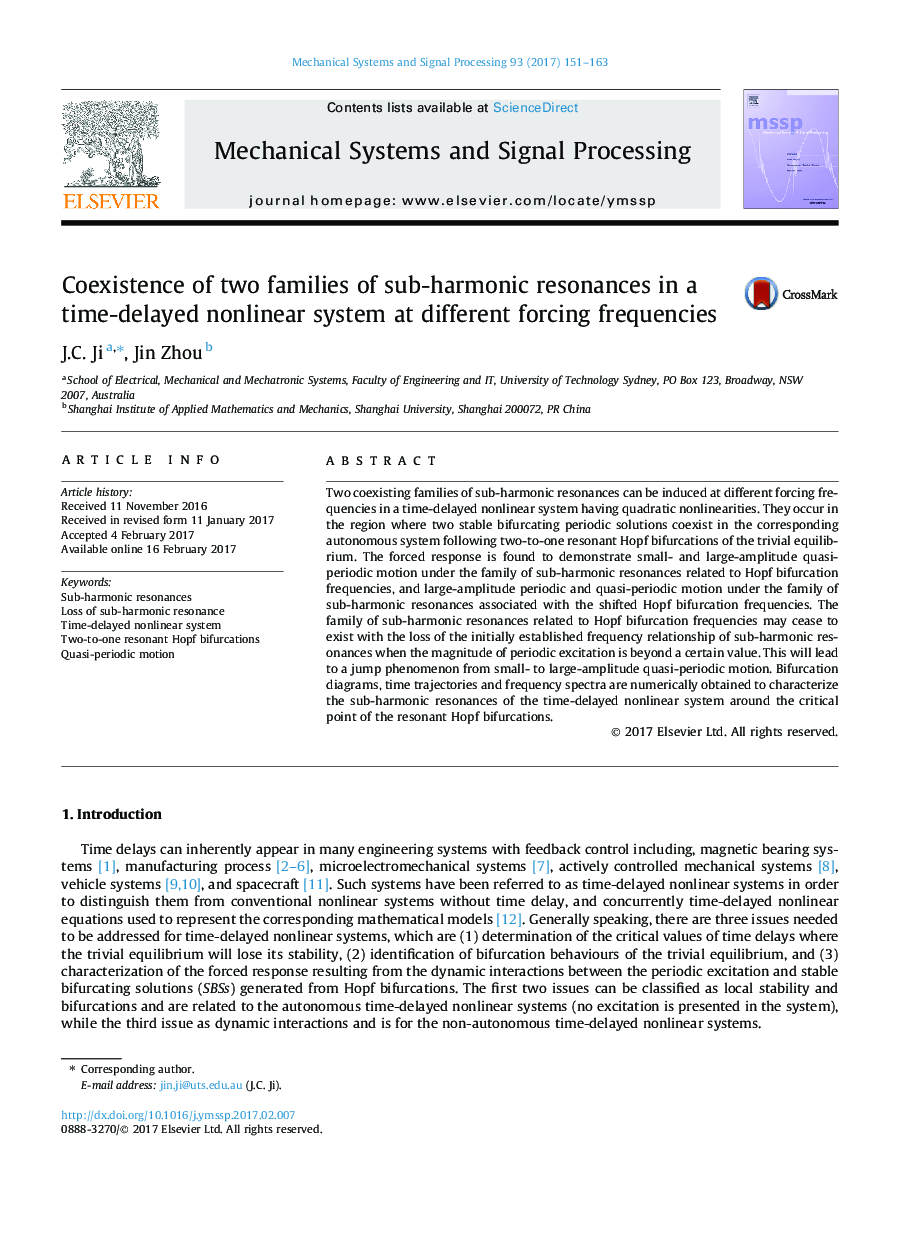| Article ID | Journal | Published Year | Pages | File Type |
|---|---|---|---|---|
| 4976967 | Mechanical Systems and Signal Processing | 2017 | 13 Pages |
•Two families of sub-harmonic resonances coexist at different forcing frequencies.•One family of sub-harmonic resonances can be lost.•The forced response shows small- and large-amplitude quasi-periodic motion.•The force response also exhibits large-amplitude periodic motion.
Two coexisting families of sub-harmonic resonances can be induced at different forcing frequencies in a time-delayed nonlinear system having quadratic nonlinearities. They occur in the region where two stable bifurcating periodic solutions coexist in the corresponding autonomous system following two-to-one resonant Hopf bifurcations of the trivial equilibrium. The forced response is found to demonstrate small- and large-amplitude quasi-periodic motion under the family of sub-harmonic resonances related to Hopf bifurcation frequencies, and large-amplitude periodic and quasi-periodic motion under the family of sub-harmonic resonances associated with the shifted Hopf bifurcation frequencies. The family of sub-harmonic resonances related to Hopf bifurcation frequencies may cease to exist with the loss of the initially established frequency relationship of sub-harmonic resonances when the magnitude of periodic excitation is beyond a certain value. This will lead to a jump phenomenon from small- to large-amplitude quasi-periodic motion. Bifurcation diagrams, time trajectories and frequency spectra are numerically obtained to characterize the sub-harmonic resonances of the time-delayed nonlinear system around the critical point of the resonant Hopf bifurcations.
